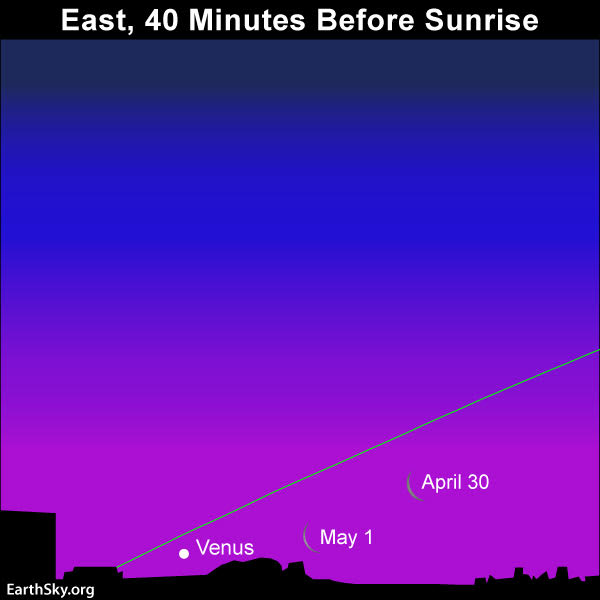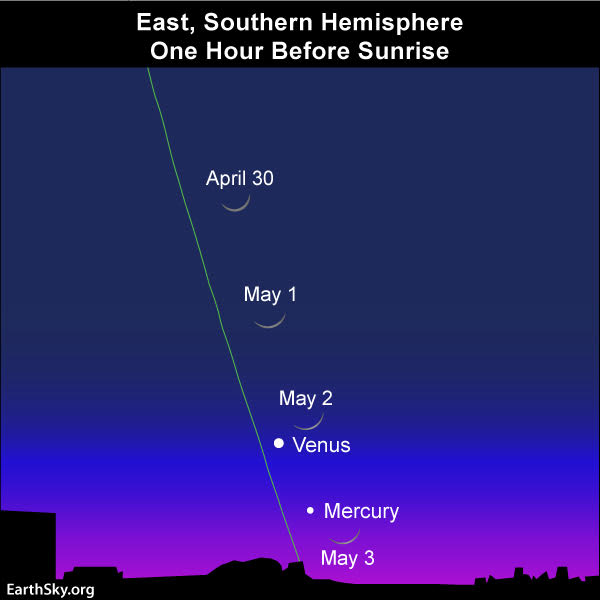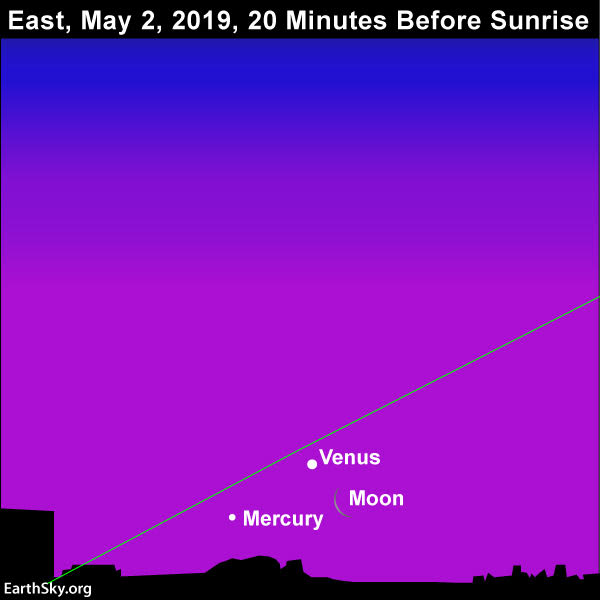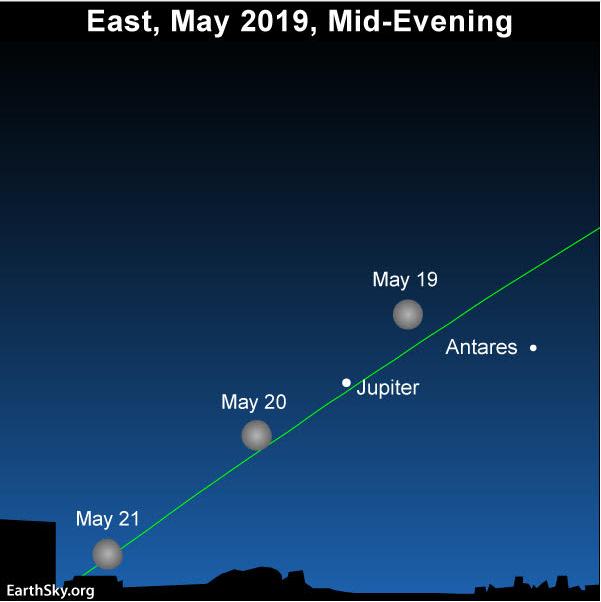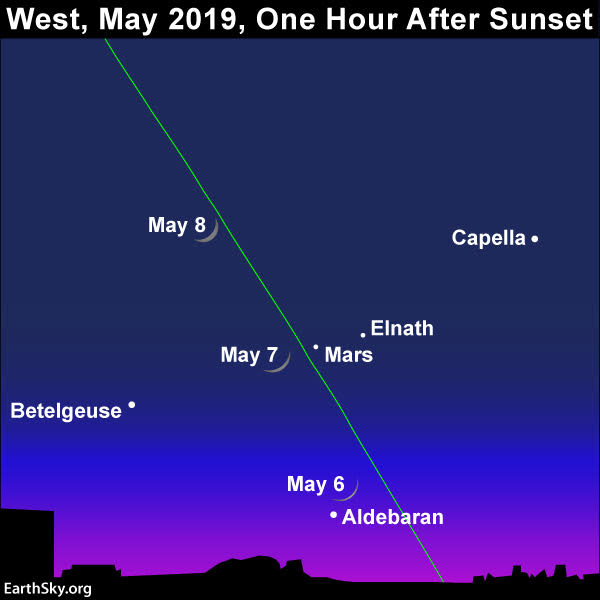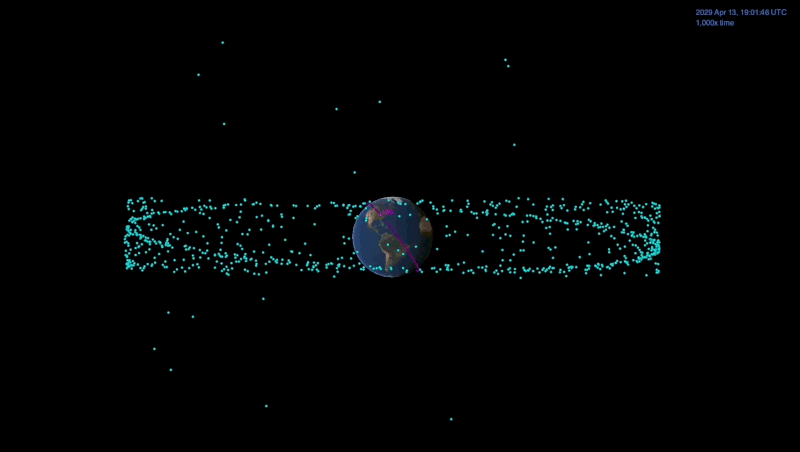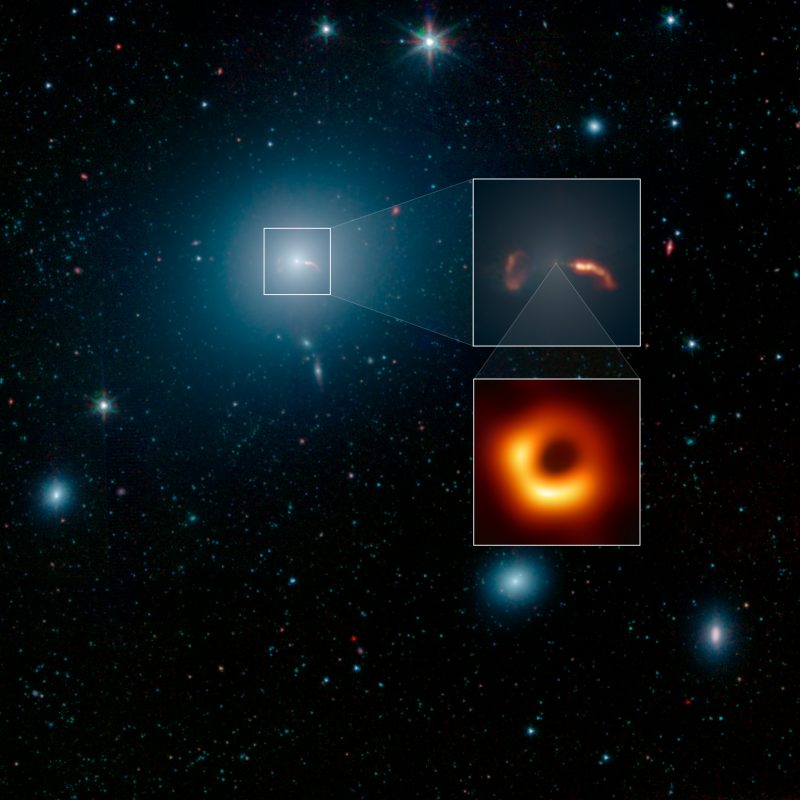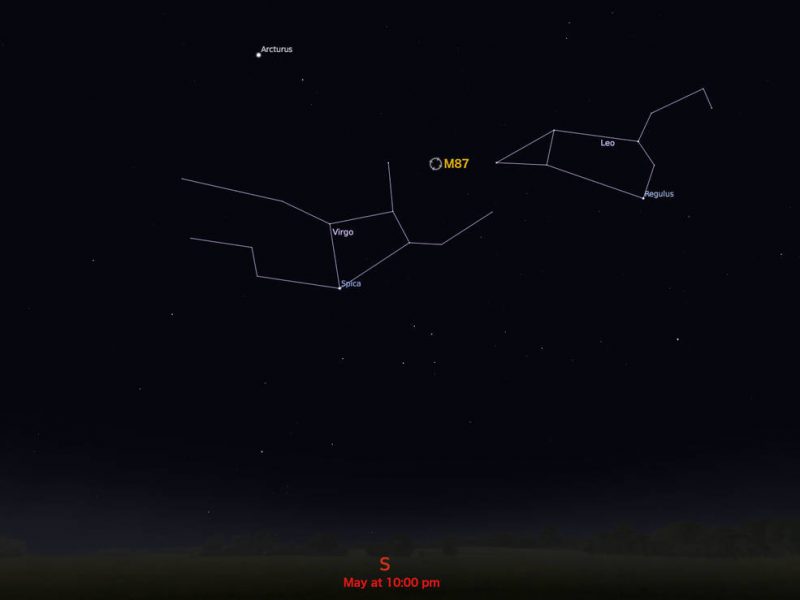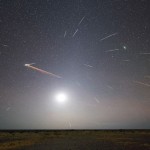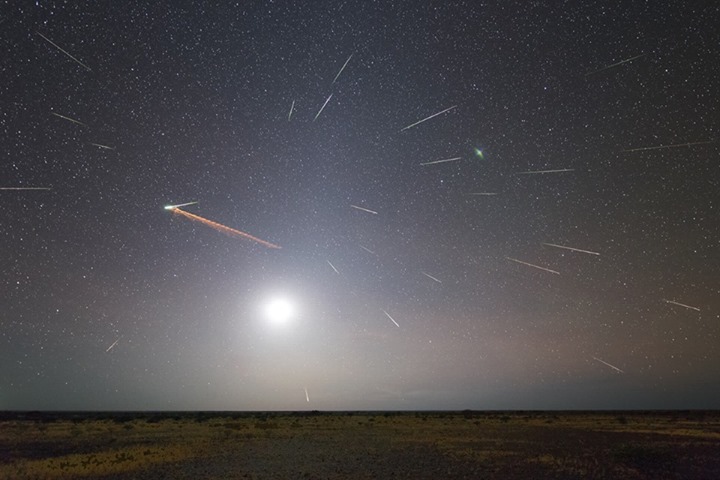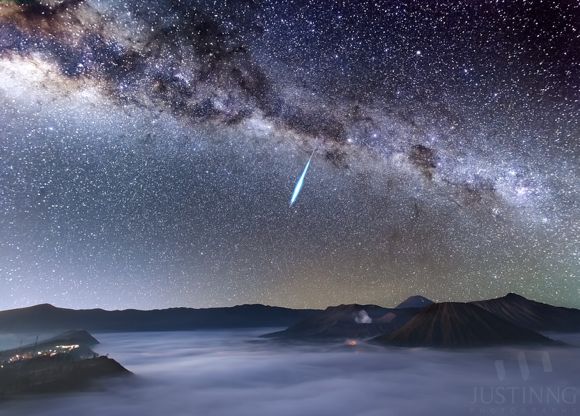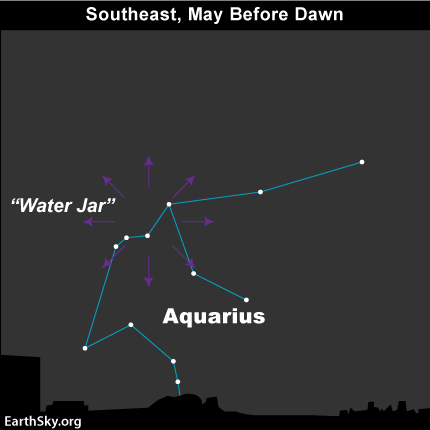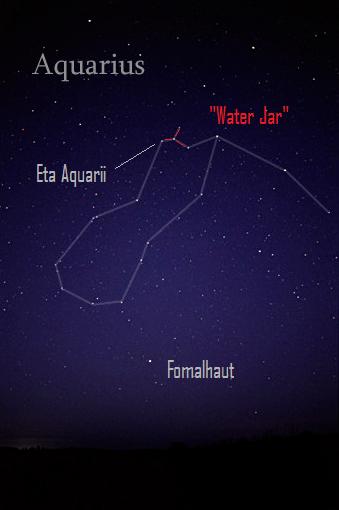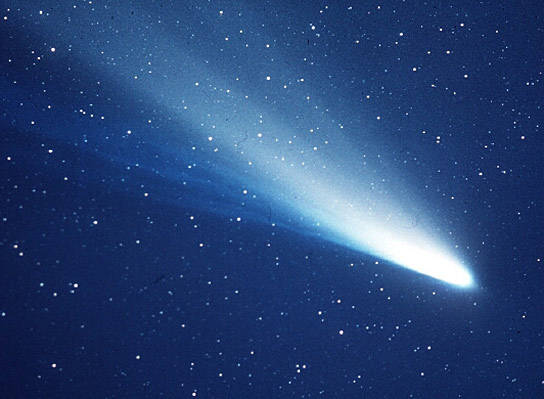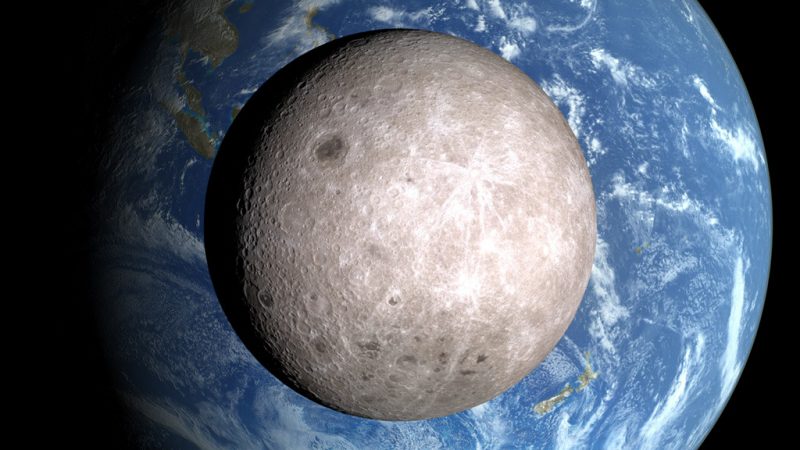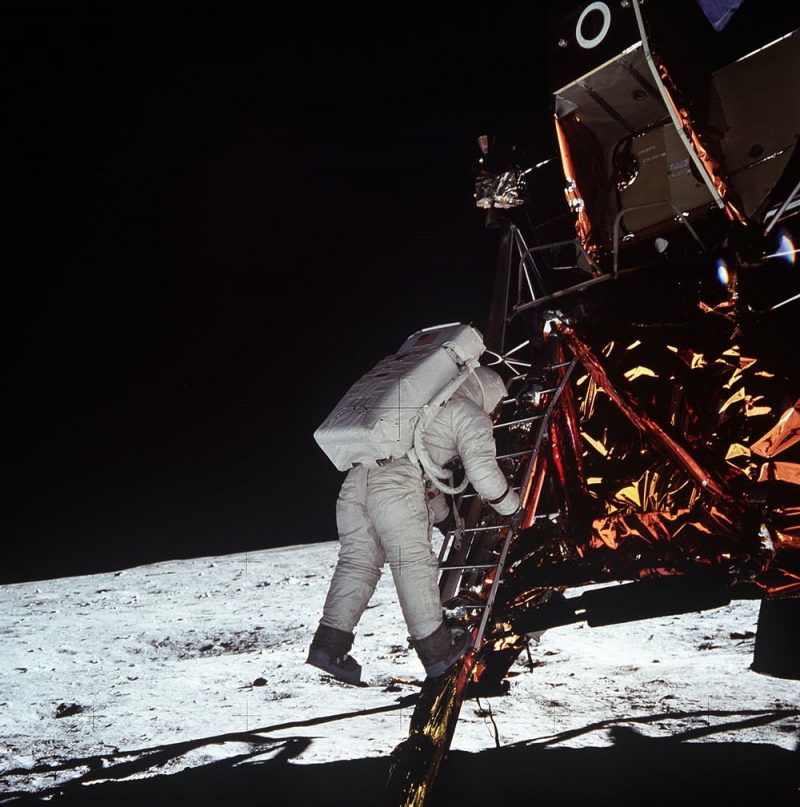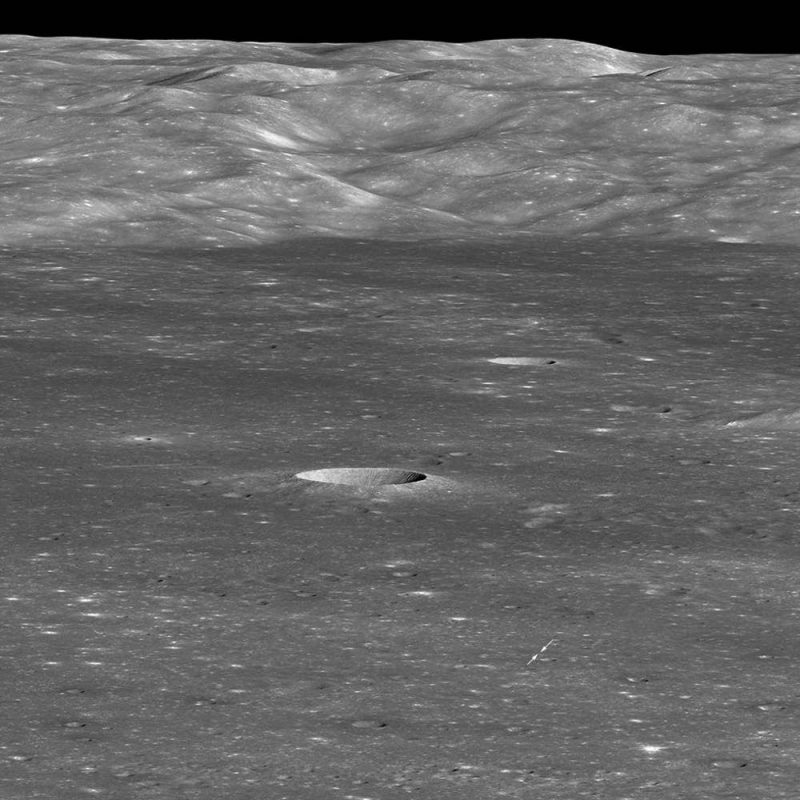The Extinction Rebellion protests of 2019 and their naysayers: analysis
It can sometimes seem a lonely road to walk. Voices in the wilderness: a plucky band of writers doing their best to explain the science of climate change, anxiously watching as the countdown-clock ticks away. Producing carefully-written, fully-referenced content, only to watch people turn over and go back to sleep. Facing condemnation, derision, ridicule, from those to whom any notion of deviation from Business as Usual is anathema. Yes, the lot of the climate change campaigner has indeed felt like a lonely road at times. But not any more.
Something extraordinary has happened. People have woken up. It reminds me in a sense of the closing chapters of Tolkein's Lord of the Rings, in which the consistently laid-back and predictably passive hobbits suddenly arise en-masse, to put a swift end to Saruman's occupation and wanton destruction of The Shire. In Tolkein's narrative, the hobbits have to fight a battle, sacrificing some of their own in the process of securing a better future for their people. It was how things tended to be done in Middle Earth.
Switch to the UK in April 2019 and it's not swords and shields but locks, glue, dance and song. The extraordinary protests by the new group, Extinction Rebellion, have brought not only climate breakdown into the limelight, but also biodiversity-loss, pollution and the myth that you can have infinite growth on a finite planet. Over the same period, vast numbers of schoolchildren have undertaken strikes and organised their own demonstrations. Swedish student Greta Thunberg has admonished administration after administration on her tour of European capital cities. Bank of England Governor, Mark Carney, starkly warned companies that if they don’t adjust to the reality of global warming, they will simply cease to exist. To top all of that off, David Attenborough delivered his bluntest warnings to date in a lengthy and compelling documentary - “Climate change: the facts”. In the light of all these developments, it almost feels as if I can put my feet up!
Of course, neither I nor we will put our feet up: if you don't hear from some Team-SkS members for a while, you can guarantee they are still busy on things climate-related, in various other ways. We know there will always be political opposition to climate science; the usual suspects will not stop peddling their contrarian talking-points and they will not go unopposed.
Misinformation-creep
In fact, a classic and well-documented example of misinformation-creep has happened in London, this past weekend. Marble Arch, one of the four key locations across London that has been occupied by Extinction Rebellion, is situated adjacent to Hyde Park. On April 20th, crowds gathered in Hyde Park to celebrate 4/20 Day, an annual occasion about which you can easily find out plenty, by looking it up using an internet search engine. A lot of litter resulted. This is not the first year in which 4/20 parties and litter have been mentioned together in the news. So what happened next? Can you guess?
Photos of the littered park were quickly circulated on social media, with captions like, “so this is what eco-warriors really think of the environment” and so on - see a typical screengrab from Facebook, below. Such things get circulated because too few people bother to fact-check. People don't fact-check either because they don't know how to, or because the story fits their narrative, an extremely narrow, evidence-free narrative in which climate protestors can only be equated with crusty hippies. Therefore there will be litter. And look! A photo of litter! QED!

Through such factors, things like this piece of fake-news can spread like wildfire. For example, on April 24th, the Facebook page of Wales Online had a story about an Extinction Rebellion protest in Cardiff. Within less than 24 hours, 159 comment-threads had been posted beneath the piece. On April 25th, I scrolled down through the first 100 original posts. Some 25% of them linked Extinction Rebellion with the litter in Hyde Park - although in fairness most such posts were debunked by others. But the whole business is a textbook example of how easily and rapidly a barefaced lie can spread around, in this Internet era.
The litter fake-narrative is, for once, straightforward to debunk. Furthermore, Extinction Rebellion, who have been carefully recycling any rubbish, actually volunteered to help local council workers, sent to the park to tidy up the litter. But such silly attempts at smearing led to me asking a bigger question: what are the key objections to Extinction Rebellion and how do they rank, relative to one another? I thought this exercise would offer us a useful snapshot, since in some cases it may help to shape the way we talk to various people about climate change. Not in all cases, of course. Hence this recent tweet from George Monbiot:
If you are middle class, they call you a champagne socialist.
If you are working class, they say it's the politics of envy.
If you wear leather shoes, they call you a hypocrite.
If you don't, they call you a hippy.
Everyone, apparently, is disqualified from challenging the system.
Method
To take the pulse of anti-Extinction Rebellion sentiment, a five-page Daily Mail comments-thread was examined. The article above the line was by Dominic Lawson, it placed Extinction Rebellion in a negative light (what else would anybody expect from the Mail?) and it generated hundreds of comments. Original posts and immediate responses were scrolled through – these being assumed to be posted by those with an axe to grind, since they had taken the trouble to set out their thoughts. A total of 208 comments that demonstrably objected to Extinction Rebellion were copied and pasted into a text document. The comments were then numbered and ranked into ten categories using a spreadsheet and the rankings were then plotted into a pie-chart.
It should be noted, by the way, that many such comments received strong rebuttals from other readers, but what is not known is whether the latter were Daily Mail regulars.
Results
Here's the chart:

Let's take a look at the categories of objection, in order of popularity.
Generic fury against the left: 21.63% of comments
The Daily Mail appeals to those who lean politically to the right, so it comes as no surprise to find a lot of comments either specifically berating the protestors as “leftists” or “lefties” or advocating the police use water-cannon, batons and various other forms of authoritarian physical control on them.
Despite the fact that the laws of physics are apolitical, communicating climate change to right-leaning people has long been one of the greatest challenges faced by the scientific community. One reason is that right-wingers tend to be instinctively opposed to big government, and issues like climate change appear to be so massive that, so the logic goes, only massive governmental controls can adequately deal with the problem. Yet Conservatism itself is deeply rooted in the preservation of things. It is conservative to want to see biodiversity preserved for future generations to enjoy.
To address this contradiction in terms, there is an important point that must be taken into account. There is a difference between old-fashioned Conservatism and the current rapacious system that is largely responsible for the crisis we find ourselves in – Neoliberalism.
Neoliberalism is an extremist form of modern capitalist philosophy in which things only have worth if profit can be extracted from them. That includes us, folks. Neoliberalism first took root in Western economies some forty years ago and, while it has made a small number of people very wealthy, it has also impoverished millions and brought about a rate of biodiversity-loss equivalent to the great mass-extinctions dotted though the fossil record.
Neoliberalism calls for deregulation like no other philosophy – indeed it loves the sort of deregulated free-for-all that brought about the great banking-crash of 2008. As such, it can be argued that Neoliberalism is not Conservative at all, but is instead a pestilence that has by stealth managed to parasitise modern politics. As such, it is not just a problem for the Conservatives, but for all of us.
China syndrome: 18.27% of comments
The second commonest objection to Extinction Rebellion, it goes something like this: “what is the point of doing anything, when countries like China are causing so much pollution?” A similar kind of argument cites over-population, making up nearly a third of comments within this category. This is defeatism at its worst – as a commentator pointed out at the Guardian, it is akin to saying, "that guy is crapping on the floor, so why should I use the toilet?" Another commentator at the Guardian, on overpopulation, made the very important point:
“Population, as others have pointed out, is solving itself. The problem is not the final billion before we stabilise. It's the three or four billion who each want five or ten times as much stuff.“
Consumerism and Neoliberalism, of course, go hand-in-hand: one could not exist without the other. Here's where we can make a huge difference, by simply consuming a lot less stuff. Although Western countries like the UK have offset a lot of their carbon footprint by outsourcing the manufacture of stuff to countries like China, that offset could be instead become an eradication. If people stop buying the stuff in the first place, less of it will be made, equating to less emissions and less pollution. In any case, the Chinese are making considerable progress of their own, as reported in March in the Guardian.
Climate change denial 13.94% of comments
For a sample of 200+ comments in a newspaper that has constantly pushed climate change denial over several decades, such a percentage is at least encouraging. Outright denial of climate science is something that is perceivably on the wane here in the UK, although it has not by any means gone away. As events unfold, denial becomes an increasingly outlandish stance to take, in the face of so much accumulating hard evidence. This is, of course, no reason for complacency on our part.
Accusations of techno-hypocrisy: 13.46% of comments
This objection asserts that, since the protestors used powered travel to get to London and they have things like mobile phones, they are therefore hypocrites. Given that proposed solutions to climate breakdown tend to advocate vastly expanded availability and use of public transport, which is the best means by far of getting to London, the accusation itself has a ring of hypocrisy to it. Also, people need to remember that, while the protestors are advocating systemic change to avoid a nightmare scenario, they are compelled to do so within the system as it currently stands.
Inverse snobbery: 11.54% of comments
Banging away on their stereotypewriters, a substantial number of commentators stated that only middle-class people can afford the luxury of being able to protest. Looking back through the history of protest, it is clear that people of all backgrounds and classes have taken part – I think of the Jarrow Marchers of the 1930s, CND, anti-apartheid and many other examples. In the case of Extinction Rebellion, it is true that it arose through an academic background in 2018, but that does not mean that the movement is elitist: it regards itself as a broad church, open to all who share the same concerns – concerns which are not the sole domain of any one demographic in society.
But things get somewhat cloudier when you look at what some of the anti-Extinction Rebellion cheerleaders are actually saying. Witness this exchange between Tory MP David Davies and radio-journalist Shelagh Fogarty, on LBC. The MP told Fogarty that the protesters were "only able to take days off work because...we have the ability to pay people benefits because we have a capitalist system".
Fogarty replied: "You're making an assumption about people being on benefits are you?" Davies: "I am making an assumption about them yes, but I think it's probably a fair assumption...I'm not saying they're all on benefits but I'll bet you most of them aren't doing a normal 9 to 5 day's work." The MP continued: "Hundreds of thousands of ordinary people's lives are being disrupted, quite unfairly, by a smallest minority of arrogant, middle-class protesters."
Some of what Davies said falls into the next category. But it reminds one of the contradictory accusation sometimes levelled at immigrant people, who, “come over here and take our jobs and benefits” – both at the same time! Talking of benefits, Davies shows how out of touch with reality he is. A week's unemployment allowance, in the UK as things currently stand, would not even buy you a return train-ticket from Leeds to London. And in any case, if Davies really wants to learn what major disruption looks like, he should read up on the science (many days worth on here alone, David), and understand what the planet has in store for us, if we carry on like this for much longer. He certainly needs to look this stuff up, given another comment he made during the same exchange, revealing his somewhat limited grasp of the subject:
“A rise of less than one degree, partly due to the end of the little ice age, doesn’t mean we should ban cars, flying & everything else which makes 21st century so great to live in.“
Job/benefit envy: 8.17% of comments
“Some of us have to work”, is always going to crop up in such discussions. The concept, bereft of a shred of evidence, is that the protestors are all workless dole-scroungers. Classifying them so allows them to be “othered” - i.e. they do not belong to our tribe - and as such are fair game for other forms of attack. That many Extinction Rebellion protestors are professionals – academics, doctors, lawyers and so on – using their annual leave in order to attend, kind of collides head-on with this particular objection.
Another important point here is that the sort of “business as usual” alluded to, by David Davies above, is exactly the problem. “Normal” is the cause of the biodiversity crisis – the never-ending cycle of travel-work-consume-as-much-as-you-can, repeated day in, day out, by countless millions of people. Or, as put by McEver Dugan and Evan Cholerton (Guardian, 24th April 2019):
“Every day we go into work and spend our time and labour building a system that is burning us alive. The top polluters in the world are directly dependent on this effort. ”
This cycle may well be, “all we know”, but it is most certainly not, “all that is possible”.
Unclassifiable: 7.21% of comments
These are objections that were posted devoid of context, for example a comment that just says, “idiots”. To which, the obvious question is, “why?”.
The Great Unwashed: 3.85% of comments
This category could probably be lumped together with “generic fury against the left”. It completely ignores the demographics of the protestors, opting instead for silly phrases like, “soap-dodgers” and so on. Again, the idea is to “other” the protestors, set them apart from the tribe, yet again it is not based on a shred of evidence.
Conspiracy theories: 1.44% of comments
Only a few of these, advancing ideas such as the protestors being secretly funded by shadowy billionaires or even that the protest is a “false flag” event. There have always been conspiracy theorists. It seems that, for some, reality is never interesting enough.
Publicity-aversion: 0.48% of comments
A minority of objections, too. The idea is that if you ignore these people, then they will go away. File under, “wishful thinking”.

Above: Extinction Rebellion in London, Easter 2019. The pink boat, used as a focal point and stage, is named the 'Berta Caceres' after the prominent Honduran environmental activist, assassinated in 2016. Image: Fernando García Vicario, via Katy Fowler. A good selection of photographs from the Extinction Rebellion Easter protests can be viewed here.
Looking forward
So there you have it. There are clearly some people that one cannot reason with. But importantly, there are points arising from the results of this brief analysis that may be worthy of further consideration, when engaging with people about climate. The difference between traditional Conservatism and Neoliberalism is perhaps the most important example. Cutting down through the chilling Neoliberal psychology that underpins far too much policy-making today, into the underlying wish to preserve desirable things, like Nature, may help bring a further turn-around.
I'm not a member of Extinction Rebellion, since one can only spread butter so thinly and writing for Skeptical Science and, in more recent years, for some other projects, has been my thing. But I support their aims. So I thought I'd ask a local friend and Extinction Rebellion stalwart, Katy Fowler, to offer her thoughts on some of the objections raised by the opposition. Katy spent several days down in London, so if anybody understands the demographics of the group, she does:
"I spent three amazing days at Oxford Circus, stewarding at the welcome desk. During that time I spoke to hundreds of people, from all walks of life. About half were People of Colour and about a quarter were tourists or visitors. All bar five were curious, positive or downright enthusiastic and delighted. Most had never heard of Extinction Rebellion before.
The five that were less supportive included: one who believed in climate change but didn't think we could make a difference; one young lad who couldn't understand why there was a carnival atmosphere, one (drunk) man who came to shout at us about China and didn't want to listen to our responses (in the end the police stepped in and he ranted at them for five minutes and left); and two separate passers-by who said things along the lines of, "you only want to cause chaos" (a line from an editorial in the Evening Standard that day) and that we were useless hypocrites.
When our food tent was taken down and moved to Marble Arch on Wednesday morning, people were coming up to the desk regularly, asking if they could buy food to donate. Our free food table was constantly full. We also had so many requests if we were taking donations that we put a pot out and received hundreds of pounds. One older Asian gentleman gave us a £50 note!
People were often very emphatic in their gratitude that something big was finally happening. We trained hundreds of people in Non Violent Direct Action. Took hundreds of sign up sheets. Transformed a polluted shrine to consumerism into a people-friendly festival of life, hope and peaceful rebellion."
Extinction Rebellion have made three key demands, The first was for the government to tell the truth by declaring a climate and ecological emergency and working with other institutions to communicate the urgency for change. The second was to halt biodiversity loss and reduce greenhouse gas emissions to net zero by 2025: a very ambitious time-scale maybe, but the need for change is nevertheless urgent. Thirdly, that the government must create and be led by the decisions of a Citizens’ Assembly on climate and ecological justice. As someone with a long involvement in the climate debate, I would also have a fourth demand: tell them how the Goddam Planet works.
By this, I mean that if, “how the planet works”, had been a compulsory part of our National Curriculum, and its predecessors, in schools from the 1950s onwards, there would have been no need for Extinction Rebellion. The planet is our only home, but outside of the Earth Science community, detailed knowledge of the development of life on Earth and what sustains it – and what has come close to wiping it out, is not commonplace. It's as if Planet Earth has been an irrelevance for all these years. Yet the basic principles could easily be taught at a secondary school level, alongside the more traditional physics, chemistry and biology. It would mean far more people would be better-equipped to help maintain a living planet: what's not to like about that?
from Skeptical Science http://bit.ly/2L9IQRg
The Extinction Rebellion protests of 2019 and their naysayers: analysis
It can sometimes seem a lonely road to walk. Voices in the wilderness: a plucky band of writers doing their best to explain the science of climate change, anxiously watching as the countdown-clock ticks away. Producing carefully-written, fully-referenced content, only to watch people turn over and go back to sleep. Facing condemnation, derision, ridicule, from those to whom any notion of deviation from Business as Usual is anathema. Yes, the lot of the climate change campaigner has indeed felt like a lonely road at times. But not any more.
Something extraordinary has happened. People have woken up. It reminds me in a sense of the closing chapters of Tolkein's Lord of the Rings, in which the consistently laid-back and predictably passive hobbits suddenly arise en-masse, to put a swift end to Saruman's occupation and wanton destruction of The Shire. In Tolkein's narrative, the hobbits have to fight a battle, sacrificing some of their own in the process of securing a better future for their people. It was how things tended to be done in Middle Earth.
Switch to the UK in April 2019 and it's not swords and shields but locks, glue, dance and song. The extraordinary protests by the new group, Extinction Rebellion, have brought not only climate breakdown into the limelight, but also biodiversity-loss, pollution and the myth that you can have infinite growth on a finite planet. Over the same period, vast numbers of schoolchildren have undertaken strikes and organised their own demonstrations. Swedish student Greta Thunberg has admonished administration after administration on her tour of European capital cities. Bank of England Governor, Mark Carney, starkly warned companies that if they don’t adjust to the reality of global warming, they will simply cease to exist. To top all of that off, David Attenborough delivered his bluntest warnings to date in a lengthy and compelling documentary - “Climate change: the facts”. In the light of all these developments, it almost feels as if I can put my feet up!
Of course, neither I nor we will put our feet up: if you don't hear from some Team-SkS members for a while, you can guarantee they are still busy on things climate-related, in various other ways. We know there will always be political opposition to climate science; the usual suspects will not stop peddling their contrarian talking-points and they will not go unopposed.
Misinformation-creep
In fact, a classic and well-documented example of misinformation-creep has happened in London, this past weekend. Marble Arch, one of the four key locations across London that has been occupied by Extinction Rebellion, is situated adjacent to Hyde Park. On April 20th, crowds gathered in Hyde Park to celebrate 4/20 Day, an annual occasion about which you can easily find out plenty, by looking it up using an internet search engine. A lot of litter resulted. This is not the first year in which 4/20 parties and litter have been mentioned together in the news. So what happened next? Can you guess?
Photos of the littered park were quickly circulated on social media, with captions like, “so this is what eco-warriors really think of the environment” and so on - see a typical screengrab from Facebook, below. Such things get circulated because too few people bother to fact-check. People don't fact-check either because they don't know how to, or because the story fits their narrative, an extremely narrow, evidence-free narrative in which climate protestors can only be equated with crusty hippies. Therefore there will be litter. And look! A photo of litter! QED!

Through such factors, things like this piece of fake-news can spread like wildfire. For example, on April 24th, the Facebook page of Wales Online had a story about an Extinction Rebellion protest in Cardiff. Within less than 24 hours, 159 comment-threads had been posted beneath the piece. On April 25th, I scrolled down through the first 100 original posts. Some 25% of them linked Extinction Rebellion with the litter in Hyde Park - although in fairness most such posts were debunked by others. But the whole business is a textbook example of how easily and rapidly a barefaced lie can spread around, in this Internet era.
The litter fake-narrative is, for once, straightforward to debunk. Furthermore, Extinction Rebellion, who have been carefully recycling any rubbish, actually volunteered to help local council workers, sent to the park to tidy up the litter. But such silly attempts at smearing led to me asking a bigger question: what are the key objections to Extinction Rebellion and how do they rank, relative to one another? I thought this exercise would offer us a useful snapshot, since in some cases it may help to shape the way we talk to various people about climate change. Not in all cases, of course. Hence this recent tweet from George Monbiot:
If you are middle class, they call you a champagne socialist.
If you are working class, they say it's the politics of envy.
If you wear leather shoes, they call you a hypocrite.
If you don't, they call you a hippy.
Everyone, apparently, is disqualified from challenging the system.
Method
To take the pulse of anti-Extinction Rebellion sentiment, a five-page Daily Mail comments-thread was examined. The article above the line was by Dominic Lawson, it placed Extinction Rebellion in a negative light (what else would anybody expect from the Mail?) and it generated hundreds of comments. Original posts and immediate responses were scrolled through – these being assumed to be posted by those with an axe to grind, since they had taken the trouble to set out their thoughts. A total of 208 comments that demonstrably objected to Extinction Rebellion were copied and pasted into a text document. The comments were then numbered and ranked into ten categories using a spreadsheet and the rankings were then plotted into a pie-chart.
It should be noted, by the way, that many such comments received strong rebuttals from other readers, but what is not known is whether the latter were Daily Mail regulars.
Results
Here's the chart:

Let's take a look at the categories of objection, in order of popularity.
Generic fury against the left: 21.63% of comments
The Daily Mail appeals to those who lean politically to the right, so it comes as no surprise to find a lot of comments either specifically berating the protestors as “leftists” or “lefties” or advocating the police use water-cannon, batons and various other forms of authoritarian physical control on them.
Despite the fact that the laws of physics are apolitical, communicating climate change to right-leaning people has long been one of the greatest challenges faced by the scientific community. One reason is that right-wingers tend to be instinctively opposed to big government, and issues like climate change appear to be so massive that, so the logic goes, only massive governmental controls can adequately deal with the problem. Yet Conservatism itself is deeply rooted in the preservation of things. It is conservative to want to see biodiversity preserved for future generations to enjoy.
To address this contradiction in terms, there is an important point that must be taken into account. There is a difference between old-fashioned Conservatism and the current rapacious system that is largely responsible for the crisis we find ourselves in – Neoliberalism.
Neoliberalism is an extremist form of modern capitalist philosophy in which things only have worth if profit can be extracted from them. That includes us, folks. Neoliberalism first took root in Western economies some forty years ago and, while it has made a small number of people very wealthy, it has also impoverished millions and brought about a rate of biodiversity-loss equivalent to the great mass-extinctions dotted though the fossil record.
Neoliberalism calls for deregulation like no other philosophy – indeed it loves the sort of deregulated free-for-all that brought about the great banking-crash of 2008. As such, it can be argued that Neoliberalism is not Conservative at all, but is instead a pestilence that has by stealth managed to parasitise modern politics. As such, it is not just a problem for the Conservatives, but for all of us.
China syndrome: 18.27% of comments
The second commonest objection to Extinction Rebellion, it goes something like this: “what is the point of doing anything, when countries like China are causing so much pollution?” A similar kind of argument cites over-population, making up nearly a third of comments within this category. This is defeatism at its worst – as a commentator pointed out at the Guardian, it is akin to saying, "that guy is crapping on the floor, so why should I use the toilet?" Another commentator at the Guardian, on overpopulation, made the very important point:
“Population, as others have pointed out, is solving itself. The problem is not the final billion before we stabilise. It's the three or four billion who each want five or ten times as much stuff.“
Consumerism and Neoliberalism, of course, go hand-in-hand: one could not exist without the other. Here's where we can make a huge difference, by simply consuming a lot less stuff. Although Western countries like the UK have offset a lot of their carbon footprint by outsourcing the manufacture of stuff to countries like China, that offset could be instead become an eradication. If people stop buying the stuff in the first place, less of it will be made, equating to less emissions and less pollution. In any case, the Chinese are making considerable progress of their own, as reported in March in the Guardian.
Climate change denial 13.94% of comments
For a sample of 200+ comments in a newspaper that has constantly pushed climate change denial over several decades, such a percentage is at least encouraging. Outright denial of climate science is something that is perceivably on the wane here in the UK, although it has not by any means gone away. As events unfold, denial becomes an increasingly outlandish stance to take, in the face of so much accumulating hard evidence. This is, of course, no reason for complacency on our part.
Accusations of techno-hypocrisy: 13.46% of comments
This objection asserts that, since the protestors used powered travel to get to London and they have things like mobile phones, they are therefore hypocrites. Given that proposed solutions to climate breakdown tend to advocate vastly expanded availability and use of public transport, which is the best means by far of getting to London, the accusation itself has a ring of hypocrisy to it. Also, people need to remember that, while the protestors are advocating systemic change to avoid a nightmare scenario, they are compelled to do so within the system as it currently stands.
Inverse snobbery: 11.54% of comments
Banging away on their stereotypewriters, a substantial number of commentators stated that only middle-class people can afford the luxury of being able to protest. Looking back through the history of protest, it is clear that people of all backgrounds and classes have taken part – I think of the Jarrow Marchers of the 1930s, CND, anti-apartheid and many other examples. In the case of Extinction Rebellion, it is true that it arose through an academic background in 2018, but that does not mean that the movement is elitist: it regards itself as a broad church, open to all who share the same concerns – concerns which are not the sole domain of any one demographic in society.
But things get somewhat cloudier when you look at what some of the anti-Extinction Rebellion cheerleaders are actually saying. Witness this exchange between Tory MP David Davies and radio-journalist Shelagh Fogarty, on LBC. The MP told Fogarty that the protesters were "only able to take days off work because...we have the ability to pay people benefits because we have a capitalist system".
Fogarty replied: "You're making an assumption about people being on benefits are you?" Davies: "I am making an assumption about them yes, but I think it's probably a fair assumption...I'm not saying they're all on benefits but I'll bet you most of them aren't doing a normal 9 to 5 day's work." The MP continued: "Hundreds of thousands of ordinary people's lives are being disrupted, quite unfairly, by a smallest minority of arrogant, middle-class protesters."
Some of what Davies said falls into the next category. But it reminds one of the contradictory accusation sometimes levelled at immigrant people, who, “come over here and take our jobs and benefits” – both at the same time! Talking of benefits, Davies shows how out of touch with reality he is. A week's unemployment allowance, in the UK as things currently stand, would not even buy you a return train-ticket from Leeds to London. And in any case, if Davies really wants to learn what major disruption looks like, he should read up on the science (many days worth on here alone, David), and understand what the planet has in store for us, if we carry on like this for much longer. He certainly needs to look this stuff up, given another comment he made during the same exchange, revealing his somewhat limited grasp of the subject:
“A rise of less than one degree, partly due to the end of the little ice age, doesn’t mean we should ban cars, flying & everything else which makes 21st century so great to live in.“
Job/benefit envy: 8.17% of comments
“Some of us have to work”, is always going to crop up in such discussions. The concept, bereft of a shred of evidence, is that the protestors are all workless dole-scroungers. Classifying them so allows them to be “othered” - i.e. they do not belong to our tribe - and as such are fair game for other forms of attack. That many Extinction Rebellion protestors are professionals – academics, doctors, lawyers and so on – using their annual leave in order to attend, kind of collides head-on with this particular objection.
Another important point here is that the sort of “business as usual” alluded to, by David Davies above, is exactly the problem. “Normal” is the cause of the biodiversity crisis – the never-ending cycle of travel-work-consume-as-much-as-you-can, repeated day in, day out, by countless millions of people. Or, as put by McEver Dugan and Evan Cholerton (Guardian, 24th April 2019):
“Every day we go into work and spend our time and labour building a system that is burning us alive. The top polluters in the world are directly dependent on this effort. ”
This cycle may well be, “all we know”, but it is most certainly not, “all that is possible”.
Unclassifiable: 7.21% of comments
These are objections that were posted devoid of context, for example a comment that just says, “idiots”. To which, the obvious question is, “why?”.
The Great Unwashed: 3.85% of comments
This category could probably be lumped together with “generic fury against the left”. It completely ignores the demographics of the protestors, opting instead for silly phrases like, “soap-dodgers” and so on. Again, the idea is to “other” the protestors, set them apart from the tribe, yet again it is not based on a shred of evidence.
Conspiracy theories: 1.44% of comments
Only a few of these, advancing ideas such as the protestors being secretly funded by shadowy billionaires or even that the protest is a “false flag” event. There have always been conspiracy theorists. It seems that, for some, reality is never interesting enough.
Publicity-aversion: 0.48% of comments
A minority of objections, too. The idea is that if you ignore these people, then they will go away. File under, “wishful thinking”.

Above: Extinction Rebellion in London, Easter 2019. The pink boat, used as a focal point and stage, is named the 'Berta Caceres' after the prominent Honduran environmental activist, assassinated in 2016. Image: Fernando García Vicario, via Katy Fowler. A good selection of photographs from the Extinction Rebellion Easter protests can be viewed here.
Looking forward
So there you have it. There are clearly some people that one cannot reason with. But importantly, there are points arising from the results of this brief analysis that may be worthy of further consideration, when engaging with people about climate. The difference between traditional Conservatism and Neoliberalism is perhaps the most important example. Cutting down through the chilling Neoliberal psychology that underpins far too much policy-making today, into the underlying wish to preserve desirable things, like Nature, may help bring a further turn-around.
I'm not a member of Extinction Rebellion, since one can only spread butter so thinly and writing for Skeptical Science and, in more recent years, for some other projects, has been my thing. But I support their aims. So I thought I'd ask a local friend and Extinction Rebellion stalwart, Katy Fowler, to offer her thoughts on some of the objections raised by the opposition. Katy spent several days down in London, so if anybody understands the demographics of the group, she does:
"I spent three amazing days at Oxford Circus, stewarding at the welcome desk. During that time I spoke to hundreds of people, from all walks of life. About half were People of Colour and about a quarter were tourists or visitors. All bar five were curious, positive or downright enthusiastic and delighted. Most had never heard of Extinction Rebellion before.
The five that were less supportive included: one who believed in climate change but didn't think we could make a difference; one young lad who couldn't understand why there was a carnival atmosphere, one (drunk) man who came to shout at us about China and didn't want to listen to our responses (in the end the police stepped in and he ranted at them for five minutes and left); and two separate passers-by who said things along the lines of, "you only want to cause chaos" (a line from an editorial in the Evening Standard that day) and that we were useless hypocrites.
When our food tent was taken down and moved to Marble Arch on Wednesday morning, people were coming up to the desk regularly, asking if they could buy food to donate. Our free food table was constantly full. We also had so many requests if we were taking donations that we put a pot out and received hundreds of pounds. One older Asian gentleman gave us a £50 note!
People were often very emphatic in their gratitude that something big was finally happening. We trained hundreds of people in Non Violent Direct Action. Took hundreds of sign up sheets. Transformed a polluted shrine to consumerism into a people-friendly festival of life, hope and peaceful rebellion."
Extinction Rebellion have made three key demands, The first was for the government to tell the truth by declaring a climate and ecological emergency and working with other institutions to communicate the urgency for change. The second was to halt biodiversity loss and reduce greenhouse gas emissions to net zero by 2025: a very ambitious time-scale maybe, but the need for change is nevertheless urgent. Thirdly, that the government must create and be led by the decisions of a Citizens’ Assembly on climate and ecological justice. As someone with a long involvement in the climate debate, I would also have a fourth demand: tell them how the Goddam Planet works.
By this, I mean that if, “how the planet works”, had been a compulsory part of our National Curriculum, and its predecessors, in schools from the 1950s onwards, there would have been no need for Extinction Rebellion. The planet is our only home, but outside of the Earth Science community, detailed knowledge of the development of life on Earth and what sustains it – and what has come close to wiping it out, is not commonplace. It's as if Planet Earth has been an irrelevance for all these years. Yet the basic principles could easily be taught at a secondary school level, alongside the more traditional physics, chemistry and biology. It would mean far more people would be better-equipped to help maintain a living planet: what's not to like about that?
from Skeptical Science http://bit.ly/2L9IQRg

